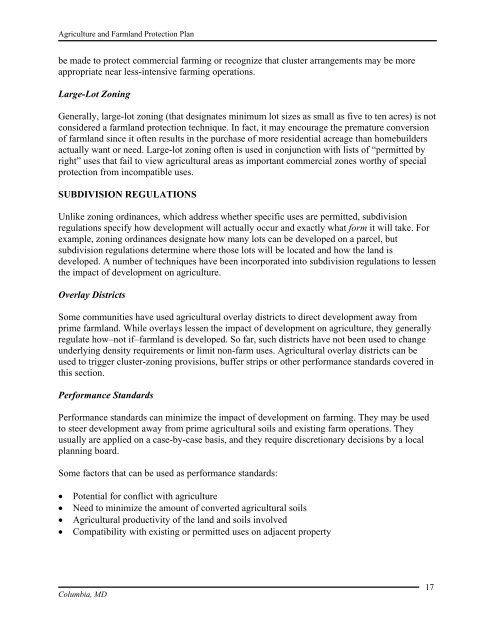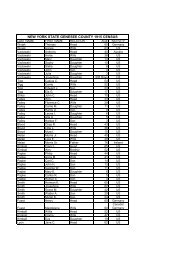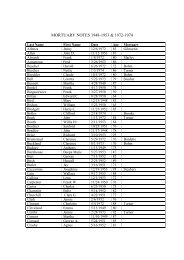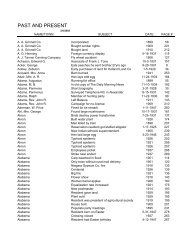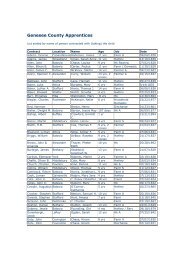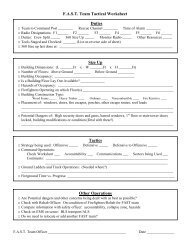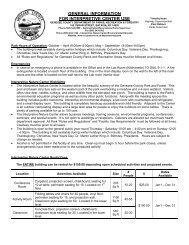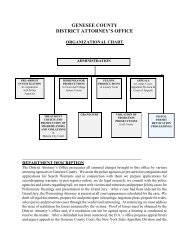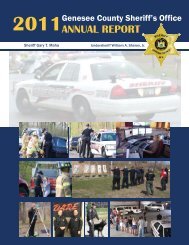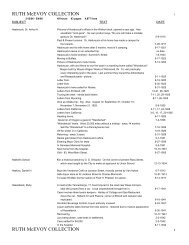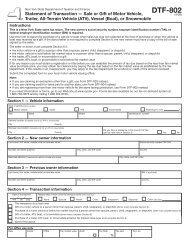Genesee County Agricultural and Farmland Protection Plan
Genesee County Agricultural and Farmland Protection Plan
Genesee County Agricultural and Farmland Protection Plan
You also want an ePaper? Increase the reach of your titles
YUMPU automatically turns print PDFs into web optimized ePapers that Google loves.
Agriculture <strong>and</strong> Farml<strong>and</strong> <strong>Protection</strong> <strong>Plan</strong><br />
be made to protect commercial farming or recognize that cluster arrangements may be more<br />
appropriate near less-intensive farming operations.<br />
Large-Lot Zoning<br />
Generally, large-lot zoning (that designates minimum lot sizes as small as five to ten acres) is not<br />
considered a farml<strong>and</strong> protection technique. In fact, it may encourage the premature conversion<br />
of farml<strong>and</strong> since it often results in the purchase of more residential acreage than homebuilders<br />
actually want or need. Large-lot zoning often is used in conjunction with lists of “permitted by<br />
right” uses that fail to view agricultural areas as important commercial zones worthy of special<br />
protection from incompatible uses.<br />
SUBDIVISION REGULATIONS<br />
Unlike zoning ordinances, which address whether specific uses are permitted, subdivision<br />
regulations specify how development will actually occur <strong>and</strong> exactly what form it will take. For<br />
example, zoning ordinances designate how many lots can be developed on a parcel, but<br />
subdivision regulations determine where those lots will be located <strong>and</strong> how the l<strong>and</strong> is<br />
developed. A number of techniques have been incorporated into subdivision regulations to lessen<br />
the impact of development on agriculture.<br />
Overlay Districts<br />
Some communities have used agricultural overlay districts to direct development away from<br />
prime farml<strong>and</strong>. While overlays lessen the impact of development on agriculture, they generally<br />
regulate how–not if–farml<strong>and</strong> is developed. So far, such districts have not been used to change<br />
underlying density requirements or limit non-farm uses. <strong>Agricultural</strong> overlay districts can be<br />
used to trigger cluster-zoning provisions, buffer strips or other performance st<strong>and</strong>ards covered in<br />
this section.<br />
Performance St<strong>and</strong>ards<br />
Performance st<strong>and</strong>ards can minimize the impact of development on farming. They may be used<br />
to steer development away from prime agricultural soils <strong>and</strong> existing farm operations. They<br />
usually are applied on a case-by-case basis, <strong>and</strong> they require discretionary decisions by a local<br />
planning board.<br />
Some factors that can be used as performance st<strong>and</strong>ards:<br />
• Potential for conflict with agriculture<br />
• Need to minimize the amount of converted agricultural soils<br />
• <strong>Agricultural</strong> productivity of the l<strong>and</strong> <strong>and</strong> soils involved<br />
• Compatibility with existing or permitted uses on adjacent property<br />
Columbia, MD<br />
17


